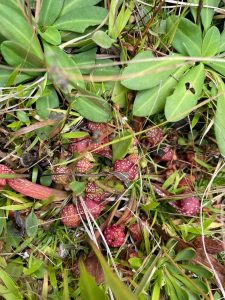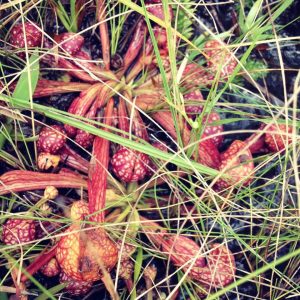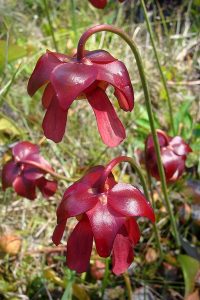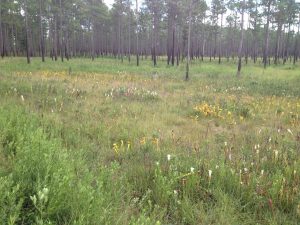

To the untrained eye, one might assume they are baby pitcher plants. Lying low and prone to the ground, parrot pitchers (Sarracenia psittacina) exhibit the same vivid coloration and intricate venation as other pitcher plants, but at a miniature scale. Full grown, they are just a few inches long and observed only by looking very closely.
Found in mucky, nutrient-poor soils and in full sun, parrot pitchers thrive in wet prairies that are regularly burned. Even shading by sparse grasses can reduce their number. Parrot pitchers are often co-located with tiny carnivorous sundew plants, which share the same living requirements.

What parrot pitchers lack in height, they make up for in water holding capacity. Their bulbous pitchers, made from modified leaves, are less upright and nearly bowl shaped. In the anaerobic soils of their boggy habitat, they lure meaty victims for nutrition. Like other members of their genus, they use a combination of sweet, sticky sap and downward-facing hairs to attract and then trap prey. Due to their horizontal orientation, parrot pitchers are often compared to “lobster pot” traps as opposed to the pitfall style of their more upright cousins. Being on the ground, parrot pitchers have even been known to capture tadpoles and small fish. However, the vast majority of plants live off insects and spiders.

Meanwhile, their pinwheel-shaped flowers are bright crimson and grow on a 4” tall stalk. The flowers droop down and are pollinated by bees. Eventually, they will produce a seedpod that may have up to 200 seeds.
There are a handful of places in our region where you can see rare parrot pitchers, along with their relatives, the white, red, purple, and yellow-topped pitcher plants. These include seepage slopes in Blackwater State Forest in Santa Rosa County, Tarkiln Bayou Preserve State Park in southwest Escambia County, and the Splinter Hill Bog Preserve in southeast Alabama.
 8
8
